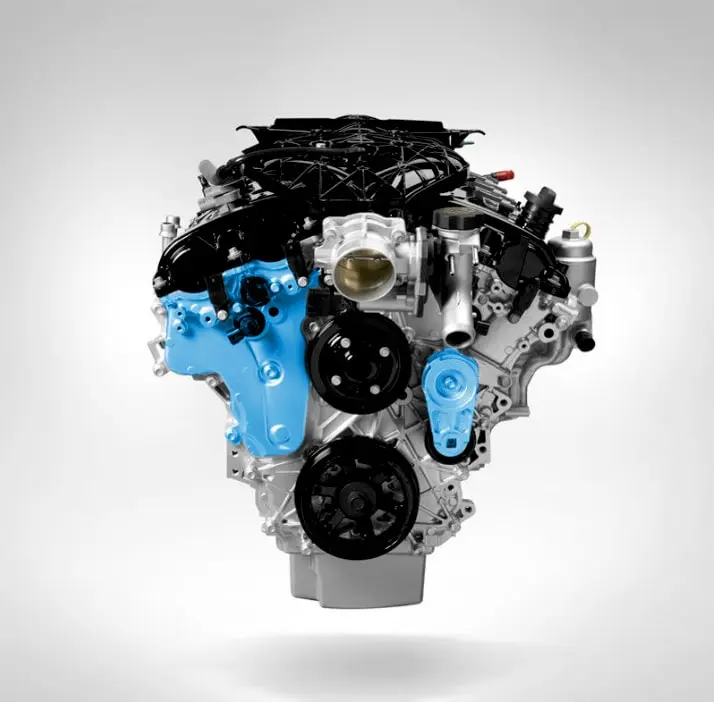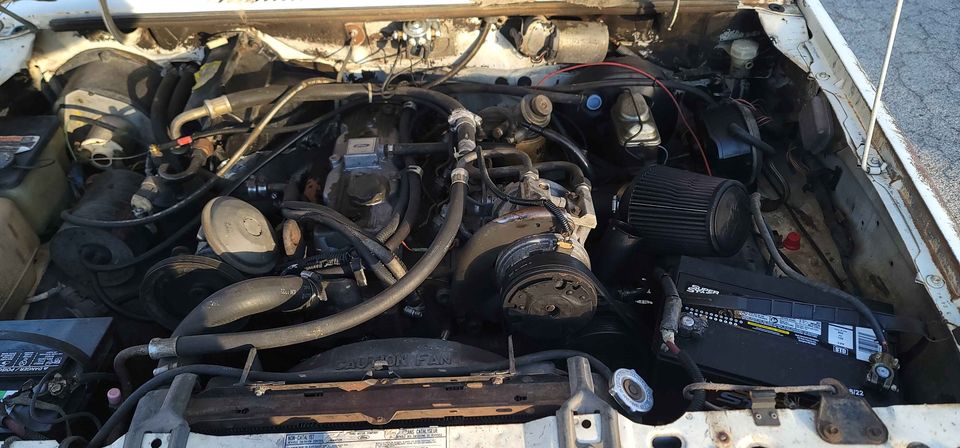Everything You Need to Know About the 2.2 Ford Ranger Engine and Its Performance
Everything You Need to Know About the 2.2 Ford Ranger Engine and Its Performance
Blog Article
Recognizing the Essentials of Automobile Engines: Functions, kinds, and functions

Review of Cars And Truck Engines
A car engine acts as the heart of a lorry, converting fuel right into power to drive it forward. This elaborate system makes up various parts that operate in unison to ensure ideal performance and performance. The fundamental procedure of an auto engine includes the interior combustion procedure, where gas and air are mixed, fired up, and removed to develop power.
The engine's design can dramatically affect its efficiency, gas effectiveness, and exhausts. Secret parts include the cylinder block, pistons, crankshaft, and camshaft, each playing an essential role in the engine's overall feature. The cyndrical tube block houses the cyndrical tubes where combustion occurs, while the pistons convert the eruptive energy from combustion into straight motion. This activity is after that transformed right into rotational power by the crankshaft, enabling the car's wheels to turn.
In enhancement to these elements, engines commonly use numerous systems such as fuel injection, ignition, and cooling down systems to boost efficiency and longevity. Understanding the basic technicians of vehicle engines is important for identifying concerns and executing upkeep, eventually adding to the car's dependability and efficiency gradually.

Kinds of Car Engines
Vehicle engines can be classified right into several types based on their design, gas type, and operational principles. 2.2 ford ranger engine. The most typical categories include internal combustion engines (ICE), electrical engines, and crossbreed engines
Internal burning engines, which can be more divided into fuel and diesel motor, operate by sparking a fuel-air mix to produce power. Fuel engines are commonly lighter and smoother, while diesel engines are much more fuel-efficient and deal greater torque.
Electric engines use electrical energy stored in batteries to power an electric motor, offering immediate torque and zero emissions throughout procedure. As technology developments, electric automobiles (EVs) are significantly ending up being popular for their environmental benefits and reduced running costs.
Hybrid engines combine aspects of both interior burning and electrical engines, permitting versatile source of power and improved gas effectiveness. They can run in numerous settings, using either the fuel engine, the electrical motor, or both simultaneously.
Each kind of engine has distinctive benefits and negative aspects, influencing their application in different car kinds and market segments, from portable autos to sturdy vehicles. Recognizing these types is crucial for making educated decisions concerning lorry option and efficiency expectations.
Engine Functions Described
Recognizing engine features is important for comprehending exactly how lorries run efficiently. At the core of any kind of interior combustion engine exists the essential procedure of transforming fuel right into mechanical power.
The ignition occurs next, firing up the mixture and producing a quick development of gases. This pressure drives the piston down throughout the power stroke, which inevitably translates into the rotational motion of the crankshaft. The exhaust stroke then removes the spent this website gases from the chamber, giving way for a new cycle to commence.
Along with these main functions, engines also incorporate systems that take care of air conditioning and lubrication, making certain optimal functional temperature levels and decreasing friction in between moving components. This elaborate interplay of functions allows the engine to create the power required for automobile propulsion while preserving effectiveness and reliability. Recognizing these functions provides useful understanding right into the complexities of vehicle design and improves the capacity to detect and deal with engine-related issues effectively.
Key Engine Features
Engine style incorporates a number of key features that significantly affect performance, toughness, and performance. One of one of the most critical facets is the engine setup, which includes inline, V-type, and flat layouts. Each configuration influences the engine's dimension, balance, and power outcome, therefore influencing overall lorry characteristics.
One more vital attribute is the engine displacement, describing the complete volume of all cyndrical tubes. Larger displacements commonly generate more power but may endanger gas efficiency. Engine products also play a crucial function; light-weight and high-strength materials, such as aluminum and magnesium alloys, boost performance without adding too much weight.
The kind of gas injection system utilized-- such as multi-port or straight shot-- influences burning performance and discharges. Turbo charging and turbocharging are you could try these out features that increase engine performance by compeling extra air into the burning chamber, boosting power outcome without substantially boosting engine size.
Finally, the existence of innovative engine management systems maximizes fuel-air mixture and ignition timing, adding to smoother procedure and better gas economic climate. Jointly, these functions define an engine's capabilities, setting the structure for its performance and long life in an affordable automobile landscape.
Maintenance Tips for Engines
Proper engine maintenance is important for making sure ideal efficiency and longevity, as disregarding regular treatment can result in substantial issues down the line. To maintain your engine successfully, start with regular oil changes, typically every 3,000 to 7,500 miles, relying on the sort of oil used. Fresh oil lubes engine components, decreasing rubbing and wear.
In addition, keeping an eye on coolant degrees is crucial to prevent getting too hot. Make sure that the coolant is covered up and remains in good problem to preserve reliable temperature level policy. Regularly inspect and change air and fuel filters, as clogged filters can hinder air movement and fuel shipment, compromising engine performance.
In addition, take notice of trigger plugs and ignition systems. Worn or malfunctioning trigger plugs can bring about misfiring and decreased efficiency. Checking the battery terminals and links for rust is additionally crucial, as a weak battery can influence engine starting.
Conclusion
In summary, a thorough understanding of automobile engines includes various kinds, features, and crucial features that substantially influence lorry performance. Interior combustion engines, in addition to electrical and hybrid alternatives, show diverse devices for energy conversion. 2.2 ford ranger engine. Recognizing the essential functions, such as intake and exhaust cycles, alongside essential engine functions like setup and gas shot systems, furnishes vehicle proprietors with the knowledge necessary for efficient look at this now upkeep and procedure, inevitably boosting car durability and efficiency
A vehicle engine serves as the heart of a lorry, converting fuel into mechanical power to thrust it forward. The basic procedure of an auto engine includes the interior burning procedure, where gas and air are blended, sparked, and removed to create power.
Consistently replace and inspect air and gas filters, as stopped up filters can impede airflow and gas distribution, compromising engine effectiveness. - 2.2 ford ranger engine
In recap, a thorough understanding of car engines incorporates different kinds, features, and key attributes that considerably influence vehicle efficiency. Acknowledging the necessary features, such as consumption and exhaust cycles, together with crucial engine features like arrangement and gas shot systems, furnishes vehicle owners with the expertise necessary for reliable maintenance and operation, eventually improving car longevity and efficiency.
Report this page